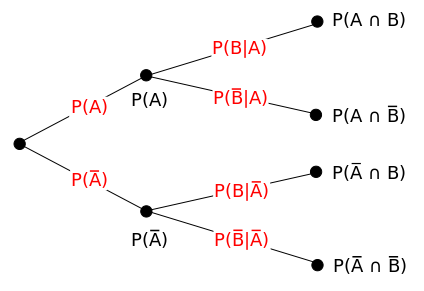Probability Of Winning A Game
 A series of
2
0
1
4
games is being played between two players
A
and
B
. There are no ties-- exactly one of the players wins in a game and the other loses. The first game is won by
A
, and
B
wins the second game. In the consequent games, the probability of
A
winning is equal to
P
+
Q
P
, where
P
and
Q
denote the number of games won by
A
and
B
respectively so far (for example, the probability of
A
winning the third game is
2
1
,
if
A
wins the third game, the probability of
A
winning the fourth game is
3
2
,
etc). The probability that the series is tied, i.e.
A
and
B
both win exactly
2
2
0
1
4
games., can be expressed as
b
a
,
where
a
and
b
are coprime positive integers. Find
a
+
b
+
1
.
A series of
2
0
1
4
games is being played between two players
A
and
B
. There are no ties-- exactly one of the players wins in a game and the other loses. The first game is won by
A
, and
B
wins the second game. In the consequent games, the probability of
A
winning is equal to
P
+
Q
P
, where
P
and
Q
denote the number of games won by
A
and
B
respectively so far (for example, the probability of
A
winning the third game is
2
1
,
if
A
wins the third game, the probability of
A
winning the fourth game is
3
2
,
etc). The probability that the series is tied, i.e.
A
and
B
both win exactly
2
2
0
1
4
games., can be expressed as
b
a
,
where
a
and
b
are coprime positive integers. Find
a
+
b
+
1
.
Details and assumptions
- This problem is not original.
The answer is 2015.
This section requires Javascript.
You are seeing this because something didn't load right. We suggest you, (a) try
refreshing the page, (b) enabling javascript if it is disabled on your browser and,
finally, (c)
loading the
non-javascript version of this page
. We're sorry about the hassle.
2 solutions
We can represent the situation as a string in which the first two states are given ( A wins and B wins subsequently)
A B ∣ A B B A B B B A A . . .
For clarity, let's consider the case in which only 8 games are played, so that A and B win 2 8 = 4 games. A possbile outcome is
A B ∣ B A B A A B
whose probability is 2 1 ⋅ 3 1 ⋅ 4 2 ⋅ 5 2 ⋅ 6 3 ⋅ 7 3 . But an other possible outcome is
A B ∣ A A A B B B
whose probability is 2 1 ⋅ 3 2 ⋅ 4 3 ⋅ 5 1 ⋅ 6 2 ⋅ 7 3 . Notice that the two probabilities are equal and can be written as 1 ⋅ 2 ⋅ 3 ⋅ 4 ⋅ 5 ⋅ 6 ⋅ 7 ( 1 ⋅ 2 ⋅ 3 ) 2 . Multiplying it by the number of possible combination (in the case ( 3 6 ) ) we obtain our final probability. This pattern holds for n = 2 k , k ∈ N number of games (I'll try to submit a proof), leading to a formula for a general case
P ( n = 2 k ) = ( n − 1 ) ! 1 i = 1 ∏ k − 1 i 2 ( k − 1 n − 2 ) .
For our case n = 2 0 1 4 , so
P ( n = 2 ⋅ 1 0 0 7 ) = ( 2 0 1 3 ) ! 1 i = 1 ∏ 1 0 0 6 i 2 ( 1 0 0 6 2 0 1 2 ) = 2 0 1 3 1 = b a
Eventually,
a + b + 1 = 1 + 2 0 1 3 + 1 = 2 0 1 5
Let P ( a , N ) denote the probability of A winning a games out of first N games. Then we can write down the following recursion on P ( ⋅ , ⋅ ) . P ( a , N ) = P ( a − 1 , N − 1 ) N − 1 a − 1 + P ( a , N − 1 ) ( 1 − N − 1 a ) ( 1 ) We have the following initial condition P ( 0 , 3 ) = P ( 3 , 3 ) = 0 , P ( 1 , 3 ) = P ( 2 , 3 ) = 2 1 Now we show that the above recursion (1) has the solution P ( a , N ) = N − 1 1 , a = 1 , 2 , … , N − 1 = 0 , a = 0 , N Proof : Clear via induction on N . ■
Hence P ( 2 2 0 1 4 , 2 0 1 4 ) = 2 0 1 3 1 .
P.S. This problem is a special case of a very interesting discrete time stochastic process, known as Polya's Urn Process .